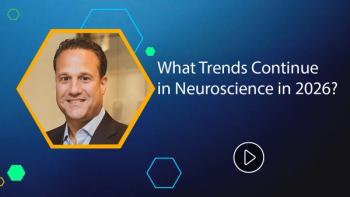
Q&A With Miruna Sasu, president and CEO, COTA, Inc.
From exposing disparities in care to guiding better patient outcomes to helping reign in the costs of care, the use of real-world data (RWD) in oncology can have far-reaching effects. Here’s how one RWD company exec is using her experience to help drive that change.
Pharm Exec: How do you envision increasing the utilization of RWD by providers and by pharma to improve cancer patient outcomes, address disparities in care, and reduce exorbitant costs of care?
Sasu: Despite having shared goals like improving patient outcomes with new and life-saving treatments, providers and life science companies operate as separate entities, making it difficult to bring needed medicines out of the lab and into the real world. There are many sound reasons for this dichotomy, but working separately in silos is holding us back.
As a RWD company with trusted relationships across the clinical and life sciences communities, COTA is uniquely positioned to form the critical bridge between stakeholders.
One example of our efforts to drive cross-industry collaboration is COTA’s recently
Since Black Americans are
As we continue to develop the ability to curate high-value data and apply actionable insights to crucial questions of care delivery and outcomes, we will certainly uncover even more disparities that need our attention. RWD will be a crucial tool in the fight to reduce disparities, ensure that underserved groups have access to necessary services, and provide effective, evidence-based care equally to all individuals who interact with the healthcare system.
It’s no secret that cancer care is extremely expensive, especially when targeted or experimental therapies are on the table. Historically, it has been difficult to create outcomes-based reimbursement structures that take this into account, especially for rare diseases and complex cases.
However, as other areas of the healthcare landscape demonstrate the viability of value-based care models, we can begin to adopt similar principles in oncology. The first step in this journey is to use RWD to determine evidence-based treatment regimens that can and should be included in bundled payment programs for sub-disease patient populations.
By rewarding better outcomes instead of simply paying for treatments, we can encourage clinicians to focus on the patient experience and enhance incentives for high-precision, highly personalized patient care.
Pharm Exec: How have you used research collaborations to investigate racial disparities in cancer care and the drug development process?
Sasu:
Curated RWD—including de-identified electronic health records and financial data—can and must be used to reveal the scope of unwanted disparities in care patterns and patient outcomes across cancer patient populations.
In our work with life sciences partners around external control arms (ECAs), we are addressing the issue of diversity and inclusion in clinical trials head on. ECAs can help avoid the time, expense, and potential ethical ambiguity of constructing a traditional control group to accompany the intervention arm. They can also help improve diversity and inclusion by allowing investigators to access a broader pool of participants than may not be readily available at a specific trial site.
Pharm Exec: How does COTA’s focus on addressing inequities in cancer research and treatment align with President Biden’s
Sasu: The Cancer Moonshot 2.0 has highly ambitious goals, including reducing the death rate from cancer by at least 50% over the next 25 years and dramatically improving the experience of being a cancer patient and caregiver during both treatment and survivorship. To achieve these objectives, we must do more than just find new ways to shrink tumors. We also need to build infrastructure to deliver more targeted and personalized care to all patients based on their unique biological, behavioral, and socioeconomic needs.
RWD is quickly becoming a fundamental pillar of the life sciences industry. With growing acceptance from physicians, researchers, patients, regulators, and pharma stakeholders, RWD is taking on an increasingly prominent role in everything from clinical trial design to medical device approvals.
But the utility of RWD goes far beyond the development of drugs and devices. RWD can help us address one of the most challenging systemic issues in healthcare: disparities in health outcomes perpetuated by uneven access to services and the unconscious bias of humans and technology. Providers, payers, regulators, and solutions developers frequently suffer from blind spots when addressing the needs of individuals across the racial, ethnic, gender, and socioeconomic spectrum, creating deeply entrenched disparities with far-reaching consequences. These inequities range from differences in insurance coverage and chronic disease prevalence to the lack of healthcare access and worse outcomes from COVID-19.
To start solving the problem, we must uncover the “why” behind these disparities. And to do that, we need comprehensive, accurate, multisource data about the people and processes involved.
Pharm Exec: What does it take to be a successful leader in pharma today?
Sasu: I’ve been blessed to have some amazing mentors throughout my career, and I’ve focused on paying back that favor with my own mentees. I strongly believe that a leader is only as strong as the people around them—from their executive team to the people they choose to help guide and coach them.
As life sciences companies continue to bring medicines to market, they are seeing that they need to do this faster. The only way to do that is for smart leaders to invest the time and resources in order to find innovative ways to augment, refresh, and mold their processes using RWD and technology platforms.
To be a successful leader in pharma today, one also needs to be able to help establish and consistently communicate a vision for the future state of the company—and then bring employees along for that journey. Strong change management skills are critical for today’s pharma leaders who are being forced to adapt and innovate with speed in mind, while also ensuring strong regulatory and quality adherence since patient lives are at stake.
Pharm Exec: How has your past pharma experience prepared you for your role as president and CEO of COTA?
Sasu: I have been in the life sciences the majority of my career, and I was brought into COTA because of that experience. I’ve had the privilege of understanding the drug development and pipeline process all the way from the lab to commercialization. That deep, hands-on knowledge has and continues to make all the difference in how I approach challenges and difficult decisions.
I’ve also incubated and helped develop strategies for many of the RWD companies that have been successful so far. I have seen companies succeed and fail. These failures, in particular, have given me deep insight that I continue to leverage as part of our own growth strategy.
At COTA, we are focused on developing best-in-class, premier hematology-oncology RWD and analytics services for the life sciences industry and for healthcare providers. You will also see an expansion in our oncology RWD, analytics, and our services for these audiences in the year to come, including a deep focus on leveraging RWD to bring equity to cancer care and drug development.
Newsletter
Lead with insight with the Pharmaceutical Executive newsletter, featuring strategic analysis, leadership trends, and market intelligence for biopharma decision-makers.





